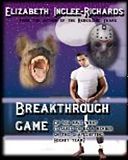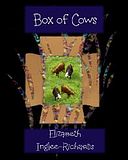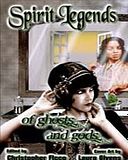I'm taking a small Blog-cation.
I will be back in a week with what may be a bit of a wordy post about ancient and native horses. Should have done it before the Viking horse, ah well.
Sunday, August 24, 2014
Tuesday, August 19, 2014
Vikings: big boys, small horses
I was originally going to cover the various northern breeds separately but I just couldn’t quite bring myself to do it that way. My Mother’s favorite breed is the Icelandic Horse. And in the middle of getting a degree in Agriculture I took a class in Nordic Saga and Myth so I could go on about this topic for a long long time.
The Northern War Horses I would say are the Icelandic Horse, the Nordlandshest, Fjord horse, Shetland, Exmoor pony, Konik, Highland Pony, Connemara, Yakut, the Coldblood Trotter and Faroe Horse.
Yeah, you saw the word pony there quite a bit. The smallest of these breeds is 11 hands the largest about 15 hands (44 - 60 inches). Yeah, the Vikings went all over the world on war horses that were smaller than some dogs. I am exaggerating, but not by a whole lot. I’ve seen Icelandic horses fall and the riders just put their feet down on the ground until the horse gets up below him.
I will come back to the Konik and Yakut when I talk about the Eastern horses and Shetland, Exmoor, Highland and Connemara when I talk about the British Native ponies.
The Icelandic, Nordlandshest, Coldblood Trotter and Faroe Horses are all extremely strong and hardy. The Nordlandshest, Faroe and Coldblood Trotter are all totally diffenrt but that is mostly becasue the people breeding them have focused on a different thing. The Nordlandshest is a small draft horse as is the Faroe. The Coldblood Trotter is a racing horse.
The Icelandic comes in three distinct types; a small draft animal, a riding and showing horse that is naturally gated and an animal raised for food. The Icelandic horses are the other three breeds wrapped into one.
The importance of the horse in Viking society can not be overstated. The God Odin had a horse. A mare was mentioned by name in the Book of Settlements (her name was Skalm) in the 12th century. People conquered on these horses (leaving remnant herds in various places)and they fit into boats. And yeah, they eat horse.
I know that sounds weird to people in the US but people do eat these animals.
The Icelandic horses also tölt (a single footed gate) and race at a pace.
When it comes to war horses, bigger isn’t always better.
I picked this video because I sold a bit to the chestnut horse in it.
The Coldblood Trotter I love this because you can hear him talking to his horse.
Fjord horse pulling farm equipment Fjord Horse
Labels:
Animals,
fantasy,
HH,
historical,
WW
Tuesday, August 12, 2014
Baroque, it’s not just music
First off I admit to using Wikipedia for this entry. I’ve been useing hte term “Baroque Horse” since at least 1989. When I went to Harcum College for Equine Studies we had a class called Horsemanship, in that class we traced the interaction between horses and people.
And this video of the Royal Andalusian School of Equestrian Arts starts with some Airs Above the Ground
The Baroque Horse is incredibly important to that history. It is the bridge between the war horse of the past and the riding horse of the present.
The Baroque Horse is the courser, or the small war horse. The courser was used for pitched battles. They were quick and could be trained not just to carry a warrior, but also to be an active participate in battle. They were, and still are, sometimes taught the haute ecole, High School of dressage, a discipline focused on bringing the horse and rider together as an integrated single unit. Some of these horses were (and are) taught Airs Above the Ground, a sort of Marshal art for horses. The moves include:
Pesade: The horse rises up on its hindquarters tucks its forelegs evenly and holds its body at a 45 degree angle.
Levade: Basically the same move but the body is held at a 30 degree angle. This is a modern move that is a test of strength.
Mezair: This is like a series of levades, the horse goes up strikes forward and then comes down lightly before raising its forehand again. The horse moves forward.
These moves sound like very controlled rears, but they are really not. The rear is a sign of resistance and the Pesade and Levade are moves that shows submission and tests strength and balance.
Croupade: The horse hops forward body parallel to the ground, legs tucked up under the body.
Ballotade: The horse hops forward body parallel to the ground legs held so you can see the horses shoes if you are standing behind it.
Capriole:The horse hops forward body parallel to the ground and the horse kicks out behind it.
Courbette:The horse hops on its back feet.
As an aside, a horse can kick with the force of a hand grenade.
The Baroque horses are small and strong with an arched neck and straight or even convex head. I had to look up the Baroque breeds, I knew the Lipizzan, Andalusian and Lusitano but I had to look up the others: Frederiksborger, Ginetta, Menorquin, Kladruber and Murgese.


You see why they are called Baroque in this video of the Spanish Riding School.

And this video of the Royal Andalusian School of Equestrian Arts starts with some Airs Above the Ground
Labels:
Animals,
HH,
historical,
History,
WW
Wednesday, August 6, 2014
Another Great Black Horse
Last week was the Great English Black Horse this week is another destrier that has made it to modern day. The Friesian horse or Belgian Black. The Friesian is smaller than the Shire, standing between 14.2 and 17 hands (58 to 68 inches)at the withers. They are almost always black.
The breed originated in the Netherlands and was linked closely with the Friesian Holstein cattle. The breed was developed from native horses who were later mixed with other large war horses and later with Spanish horses.
I think (from looking at the breed) that they are a breed that links the heavier destrier with the smaller courser. It has a “Baroque” type conformation. Like the Shire, it is larger than it was in the Middle ages.
If the English Black Horse was renowned for size strength and the ability to trot for long distances, the Friesian was known for being quick and nimble for the size and power they offered.
This breed stared in the movie Ladyhawk.
This lovely breed has been gaining in popularity throughout my life. And it cuts a dashing figure under saddle or in harness. I think this is an awesome choice for a fantasy horse, he can carry a knight or a lady or even as a cart horse.
Don’t let the fact that they are smaller fool you, the first time I met one of these animals was at a show. His groom had brought him out for a bath and the horse didn’t want one so he just lifted his head and walked off with the groom hanging from the lead line.
He just lifted his head. That is the kind of power these horses have. This is lovely video of a Friesian.
Labels:
Animals,
fantasy,
HH,
historical,
WW
Subscribe to:
Posts (Atom)





